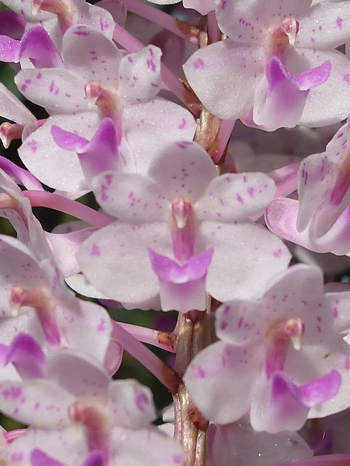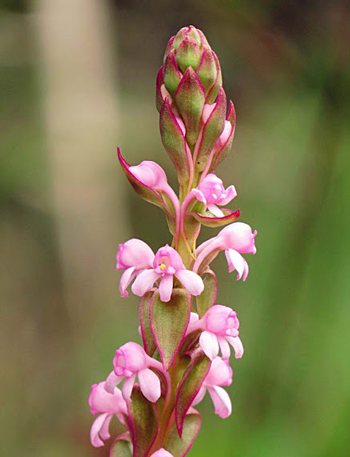Scientists are now looking at orchids as a source of alternative remedies for asthma, malaria
An Indian study tested the antimycobacterial, antibacterial, and leishmanicidal properties of three different species of orchids from the northern province of Arunachal Pradesh. Fractions and extracts from these medicinal plants offered alternative therapies for asthma, malaria, and tuberculosis, and visceral leishmaniasis.

The tested plants are the foxtail orchid (Rhynchostylis retusa), duan sui zhu jing lan (Tropidia curculigoides), and Nepal satyrium (Satyrium nepalense). They are native to the province and are also found in other regions.
The foxtail orchid is a very common, useful, and highly-regarded plant. Its roots are used to treat asthma, tuberculosis, and numerous other illnesses.
Duan sui zhu jing lan is the rarest of the trio. Locals boil its roots to create a decoction for patients suffering from diarrhea and the cold stage of malaria.
Finally, Nepal satyrium is consumed by people an aphrodisiac, food, and tonic. It is taken by patients with diarrhea, malaria, and dysentery.
While the foxtail orchid and Nepal satyrium have been covered by earlier studies, there is no official literature regarding duan sui zhu jing lan.
Herbal medicines from these and other local plants are often all that protect the people of Arunachal Pradesh from communicable diseases. The province is particularly susceptible to malaria, tuberculosis, and visceral leishmaniasis.
Strains of the tuberculosis mycobacteria responsible for TB have developed a resistance to antibiotic treatment. Malaria and visceral leishmaniasis – which is transmitted by the kala-azar parasite – are the worst and second worst parasitic diseases in the country.
The combination of drug-resistant bacteria and the promising leishmanicidal properties shown by plant-based extracts and compounds has prompted researchers to look up medicinal plants like the Arunachal Pradesh orchids.
Indian medicinal orchids contain fractions that could help treat diseases
Indian researchers acquired samples of foxtail orchids, duan sui zhu jing lan, and Nepal satyrium from the province. They dried the plants before dividing them into three parts.

The active ingredients in each part were extracted or fractionated. The researchers identified a total of 30 different extracts and fractions, including MeOH, n-hexane, dichloromethane, and ethyl acetate. Each active ingredient was screened for phytochemicals.
The next step was to perform assays involving the pathogens of malaria, tuberculosis, and visceral leishmaniasis. Each extract or fraction was applied to drug-resistant tuberculosis microbes, the promastigote and intracellular amastigote forms of the kala-azar blood parasite, and five species of bacteria with antibiotic resistance.
They also tested the compounds for cell cytotoxicity. The higher the cytotoxicity of a substance, the more dangerous the extract or fraction is for human use.
Testing shows compounds from medicinal orchids are effective and safe
Based on their findings, the researchers determined that the most effective antimycobacterial is n-hexane. A fraction from the flower of the Nepal satyrium, it proved very potent against the tuberculosis mycobacteria.
The best leishmanicidal compound was diethyl ether. Found in the roots of the foxtail orchid, this fraction is highly effective against both the free-swimming promastigotes and the intracellular amastigotes that caused the worst form of leishmaniasis.
N-hexane showed moderate effectiveness in the leishmanicidal assay. It, diethyl ether, and other fractions showed permissible levels of cytotoxicity; while they did affect human cells, they were much more toxic towards the parasites.
Finally, both n-hexane and diethyl ether proved highly potent against all five drug-resistant bacterial species.
The researchers concluded that Nepal satyrium showed the greatest promise as a source of new pharmaceutical products. They specified n-hexane from the orchid’s flower as the fraction with the highest potency. All extracts and fractions are also safe for human use.
yogaesoteric
January 19, 2020


